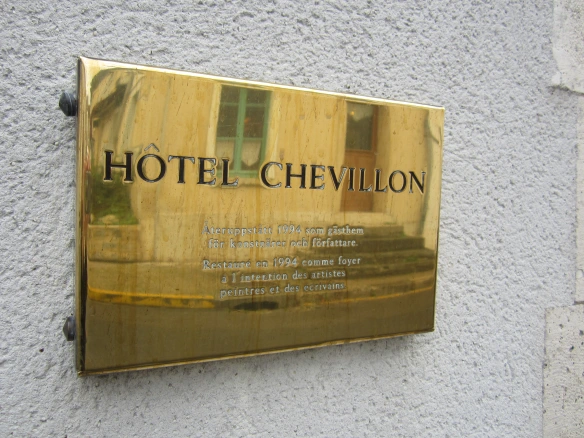
I just finished Cézanne A Life by Alex Danchev (Pantheon Books 2012). I shouldn’t have bought this book for myself so close to the holidays. I could have hinted and received it as a perfect artist gift. But I succumbed when I saw the cover in person – it literally shines. And so does the inside.
The book tells the story of the artist and the person. Cézanne had a troubled, complicated life which began in Aix-en-Provence in 1839, where he was close friends with fellow student Emile Zola. He talked his difficult father into letting him abandon law school in favor of art, and moved to Paris in 1862, where he began his art studies at the Académie Suisse on the Ile de la Cité. It was there that he met and formed a deep, lasting fellow-artist friendship with Camille Pissaro. He also met one of the Académie Suisse models, Hortense Fiquet, who became his long-term mistress (they would have a son and finally marry after 17 years).
One of my favorite parts of the book was its treatment of Cézanne’s complicated relationship with Hortense, whom he called “La Boulle” (“the dumpling”). Cézanne’s father disapproved of the match, so Cézanne kept it secret for many years, even after the birth of their son. The couple lived separately for much of their lives, and it’s really hard to tell how close they were. Cézanne painted 27 portraits of Hortense over the years, and most of them are absolutely haunting. Cézanne didn’t aim to achieve a “likeness” in his portraits as much as a “thereness.” So, there is Hortense: always a bit inscrutable, sometime sad, angry, distant or intense – more of a presence (here I am, as I am) than a lover eager to please, or a muse conscious of her ability to inspire. But there she is, looking back at Cézanne. What do you think she’s thinking?

Madame Cézanne with a Fan (1886-88). Stiftung Sammlung Buhrle, Zurich. Once owned by Gertrude Stein.

Madame Cézanne (1885). Nationalgalerie, Museum Berggruen, Staatliche Museen, Berlin.

Madame Cézanne With Her Hair Down (1890-92). Philadelphia Museum of Art.

Madame Cézanne in Striped Skirt (1877). Museum of Fine Arts, Boston

Portrait of Madame Cézanne (1888-90) Barnes Foundation, Philadelphia

Madame Cézanne with Hortensias (1885). Private collection.
And then, just when you think you are coming to understand who Hortense might have been, and who she might have been to Cézanne, you get to see this tender and emotional pencil and watercolor sketch on paper (above), which is in a private collection but is beautifully reproduced in Danchev’s book. And it is so intimate and beautiful, you can’t help but see that Cézanne did love her, and that they were indeed happy. At least for a time.
Cézanne would often return to his hometown of Aix-en-Provence, with or without Hortense. In the end, he bought a studio up on a hill, where he painted until his death. Today, it has been restored and is open as a museum, a must-see for an art lover’s trip in Provence. For more information and images, click on the link to the website below.

Cézanne’s Studio in Aix-en-Provence from 1901-1906 (currently a museum). The apples!

The door to Cézanne’s last studio in Aix-en-Provence. Guided tours are available in French and English.
Cézanne A Life by Alex Danchev: Highly recommended
Atelier Cézanne in Aix-en-Provence, 9 avenue Paul Cézanne, 13090 Aix-en-Provence: HIghly recommended


















You must be logged in to post a comment.